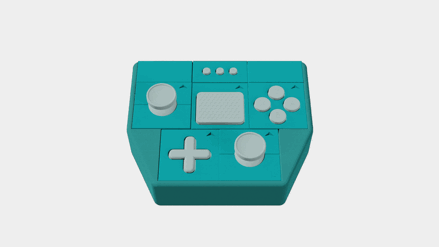Sustainability Through Modularity
Modular Design, Consumer Electronics, Fusion 360, KeyShot, Blender, FDM, SLA

How can we keep hard to recycle products out of landfills? By choosing a space where products are rarely thrown away (game pads from the 1980's are still in circulation in secondary markets) and supporting that strength by increasing ease of repair and ability to personalize.

I was able to make a controller that is easier to repair with standardized parts, and that is also customizable, with parts that connect to each other

When I started this project, the goal was to fit modularity into an existing form factor for game pads.
Then I developed interlocking modules, connected with a magnet-peg system



3 tone colorways highlight the different elements of the design while also encouraging the use of modular features by letting the user combine color ways with a la carte purchasing. When a module is worn out a user can buy an individual module in any colorway they want, either matching or choosing a contrasting color.
This controller uses modularity to lengthen the lifespans of controller. User testing and interviews revealed that thumbsticks are first to break. Now these can simply be replaced, significantly lessening trash and keeping it out of landfills This project also includes a research paper that can be found at https://repository.rit.edu/theses/11481/.



